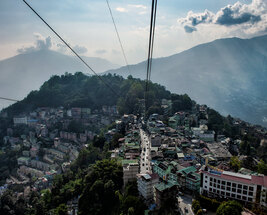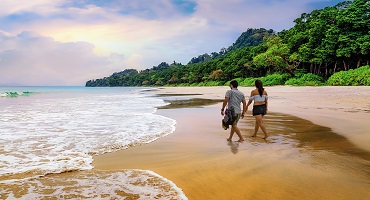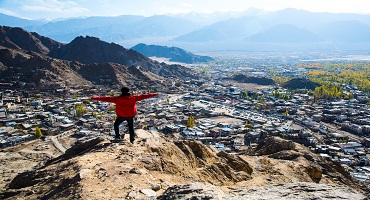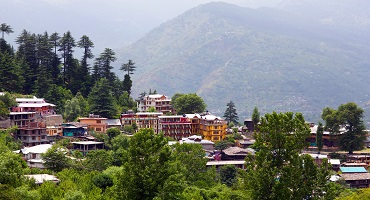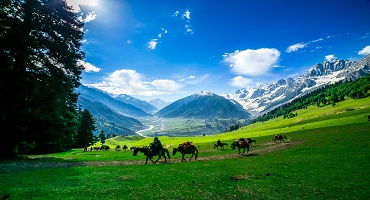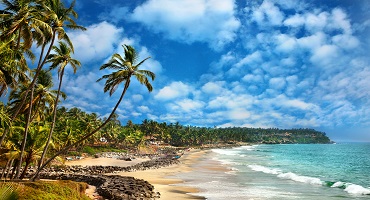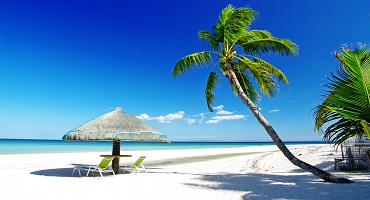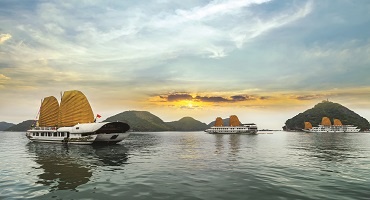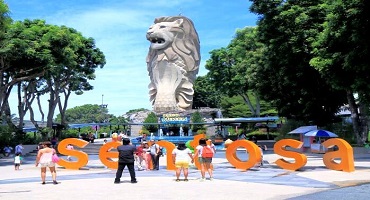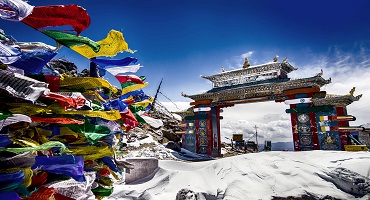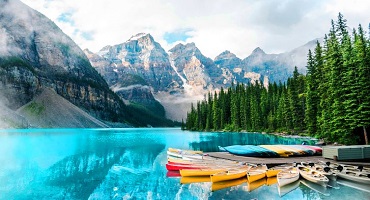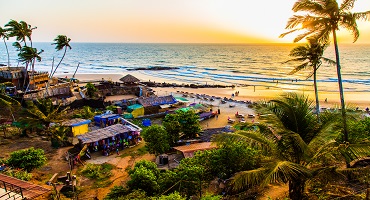Sikkim: Footsteps to the Himalayas
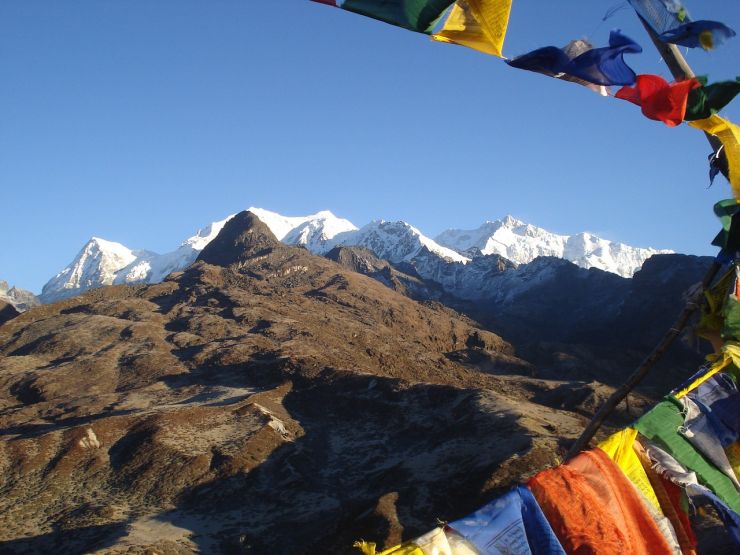
Scintillating, Spellbinding, Serene – Sikkim. Where monasteries, monuments, and momos, reign proudly. Where hills are heaven, and lakes are king. Where meditation is breathing, and chanting is speaking. Where the tea is infused with Tibet and sweetened with Nepal. Where Buddhism and Hinduism are life long friends. The hidden valley of rice – Sikkim, is small but stupendous. Explore wonderous Sikkim tourism, not just as a fortunate stroke of serendipity but as the best decision you’ve ever made.
| Sikkim Tourism: A Quick View of the state |
| Capital |
Gangtok |
| Official Language |
Nepali, English |
| Dial Code |
03592 |
| Population |
660,160 (as of 2018) |
| Currency |
Indian Rupee (INR) |
| Time Zone |
UTC+05:30 (IST) |
| Area |
7,096 square km |
Highlights of Sikkim Tourism: A watercolor painting
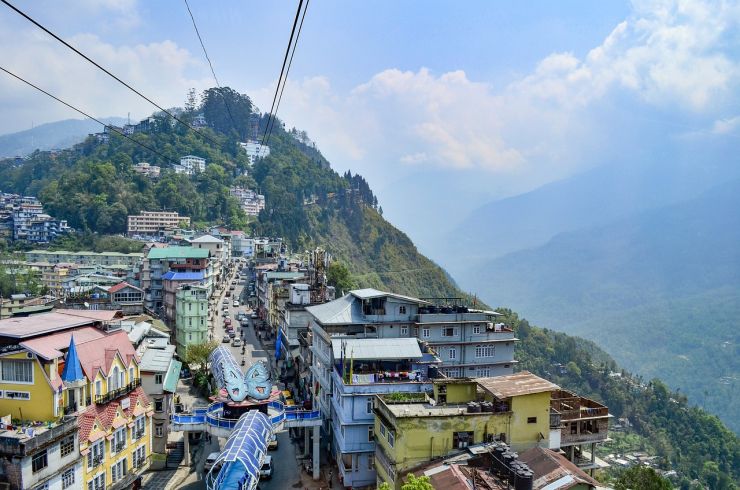
Monasteries
From some angles, Rumtek Monastery looks like it is perfectly camouflaged in mother earth’s embrace. Hues of blue, green, gold and red bejewel its constitution. An uphill climb is what it takes to reach this mountainous terrain after which you will be dazzled by spectacular views from its vantage points. Located near the capital, it is home to a community of monks from the Karma Kagyu lineage and offers a slice of delicious peace like nowhere else. For a taste of old-world charm, a visit to Tashiding Monastery of the Nyingma sect is just what you need. A short walk along a little footpath will lead you to the canopy of colorful prayer flags and stone plates inscribed with sacred Buddhist inscriptions. What truly makes Sikkim tourism special are the frills of frosty mountains all around. Our royal recommendation would be to experience the grandeur of Tsuklakhang Palace where you can glimpse a pair of carved dragon columns that are simply beguiling.
Parks
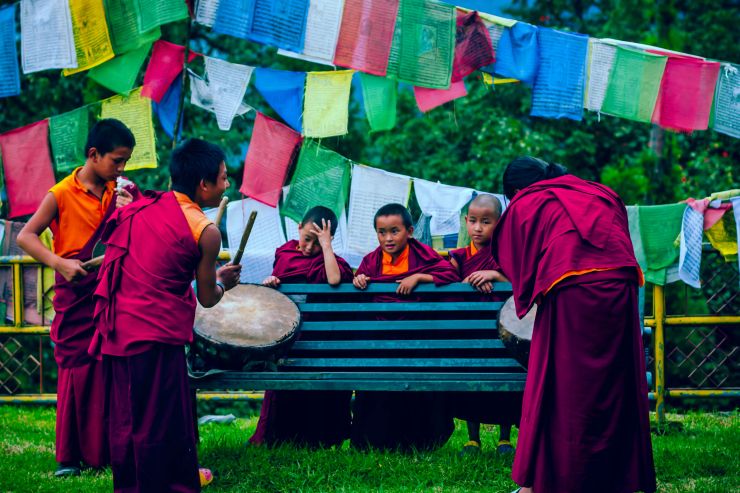
Verdant lime-green lawns speckled with emerald shrubs stretch delightfully in all directions, amidst the backdrop of the Himalayan peaks. In the center is a slate grey path that inclines towards the 41m golden statue of Buddha, that is adorned with a sapphire crown. Buddha Park is a meditative haven, its air humming to the beat of soulful music. Situated near Ravangala, this site is plain wanderlust! River Orange Garden is a citrus oasis off the beaten track. Imagine being shaded by a thousand swaying trees bosomed with perfect little oranges - like setting suns. Here, let the sweet juice of oranges and pineapples trickle down your chin. Take a walk along the gushing Rimbi River. Explore the many paths, climb the many steps, and ascend the many slopes. Finally, we urge you to visit Norbugang Park - a historic woodland garden with an impressive coronation throne burrowed deep within its belly.
Hill stations
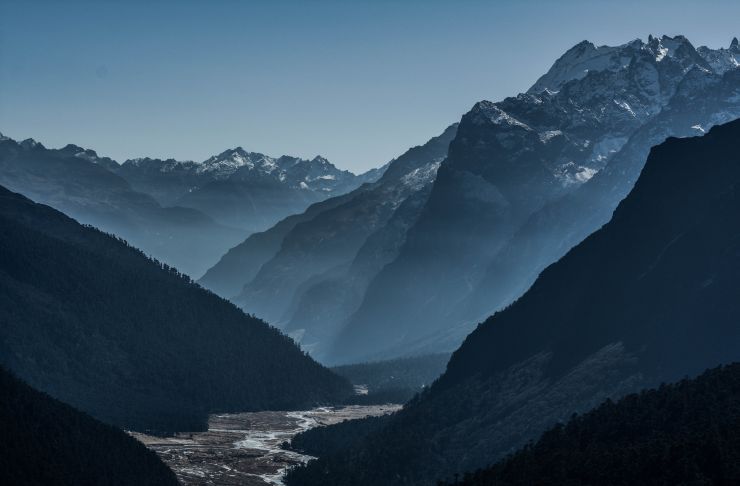
Deemed as one of the most picturesque villages of northeast India, Lachung is a quaint hamlet with endless charms on its bracelet. From the sweet and tangy fruit orchards to the whooshing rivers that create music as it flows, everything over here breathes in its most natural state. Visit the gorgeous sights of Mount Katao and Yumthang Valley. Renowned for its entrancing forests, the symphony of waterfalls, and other magical scenery, Aritar will steal your heart. Hike, paraglide, camp, or rock climb – your wish is its command. You can even witness exciting horse-riding competitions and graceful archery.
Lakes
The magnificence of Tsomgo Lake can only be described with the analogy of a snow globe. It is the feeling of being captured and spellbound in a winter wonderland. While the lake itself is as clear as glass and as sparkly as crystal, the overlooking mountain ranges are vast and breath-taking. The landscape is decorated with baby blue and soft white. Trek away or take a ride on a yak, the choice is yours. Gurudongmar Lake, located in north Sikkim, is one of the highest lakes in the world. Legend has it that Buddhist master Padmasambhava blessed part of this lake so that it would melt and form drinking water for the people. This natural wonder is equal in beauty and splendor, so are Menmecho Lake, and Cholamu Lake.
Cuisine
Who doesn’t love a steaming plate of momos? These dough buns originated from Tibet and have been influenced by Nepalese cuisine. They are stuffed with everything from meats, to cheese, and even tofu. A portion of these is a must-have! You must also try Thukpa, a healthy and mouth-watering noodle soup. You may choose to slurp it down with veggies or a choice of meats. Now, for all you pork lovers out there, we have something really special. Phagshapa is a pork and radish dish cooked with zero oil that sizzles with sweet-tanginess. We also recommend the Sha Phaley - deep fried bread stuffed with beef and cabbage.
Interesting facts about Sikkim Tourism – Gospel truths
- Sikkim is an Indian state, but not by birth. If not for being annexed by India, Sikkim would have been incorporated into China.
- Sikkim has the greatest number of foreigners (Nepalese) than any other Indian state.
- Approximately 11 languages are spoken in the state.
- Asia’s second-highest suspension bridge is located in Sikkim.
- Sikkim is a secular state with an abundance of monasteries, temples, churches, gurdwaras, and mosques.
- Pakyong Airport, at 4500 ft, is one of India’s highest airports.
Location: A view from afar
Cradled in the snowy peaks of the Himalayan mountain ranges is a sublime place - Sikkim. With Tibet to the north, West Bengal to the south, Bhutan to the east, and Nepal to the west, this state is caressed by many eclectic cultures.
Click here to view Sikkim on Google Map
Best time to visit Sikkim
Sikkim’s seasons fall under the categories of summer, spring, autumn, monsoon, and winter. Its temperatures vary from subtropical to tundra. Spring (March to May) and autumn (October to December) are the best seasons to visit Sikkim because of the promise of fresh blooms and crystal-clear views.
How to Reach Sikkim – Bliss awaits
By Road
Traveling by road is one of the most convenient options. It is scenic too! You can opt for public buses, private bus services, taxis, and jeeps for your inter and intrastate travel. Furthermore, Highway 31A is Sikkim’s most functional national highway connecting the state to neighboring places such as Darjeeling, Kalimpong, New Jalpaiguri, and Bagdogra.
By Rail
Should you choose to travel by train, Jalpaiguri and Siliguri are the only two stations that you can avail off. Worry not, because they are well connected to major cities across the country.
By Air
Pakyong Airport, in Gangtok, flies to and from only one destination - Kolkata. However, you can fly into Bagdogra airport, which is a mere 16 km from Siliguri.
History of Sikkim: Victories and Warfare
The earliest vestiges of human life can be traced back to the Lepchas, Limbus, and Magars. Sikkim’s illustrious history begins with the reign of the Namgyal Dynasty in the 17th century. During this time, the kingdom was ruled by a Buddhist priest known as Chogyal. In 1890, Sikkim became a British state in princely India. The colonial period witnessed significant turmoil with the Nepalese. Post-independence, the state became a dependent territory within the Republic of India. 1973 witnessed anti-royalty riots. 1975 witnessed the fall of the monarchy. During the same year a referendum was held, and Sikkim finally became an independent state in India.










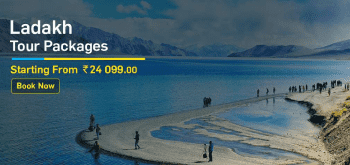





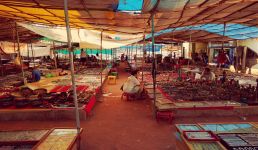
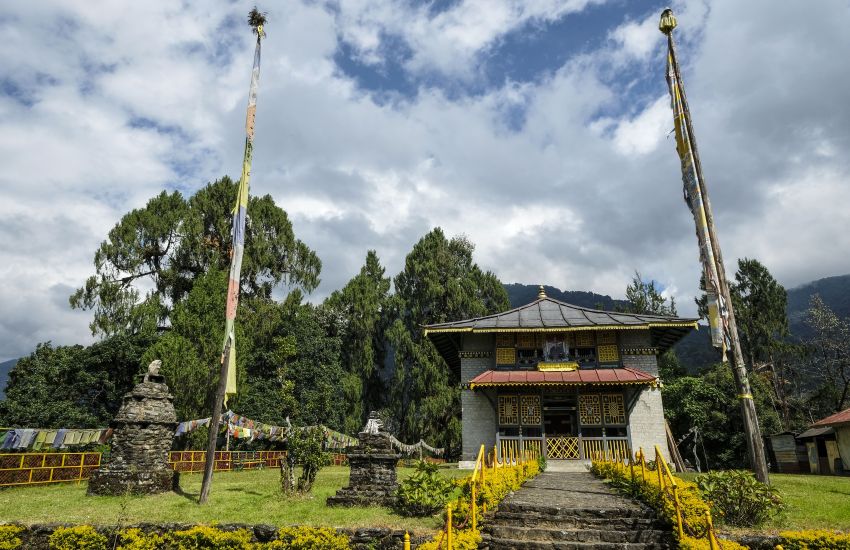

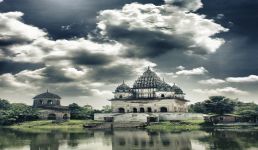
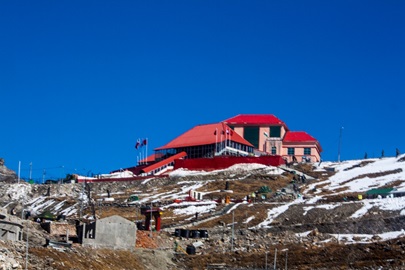







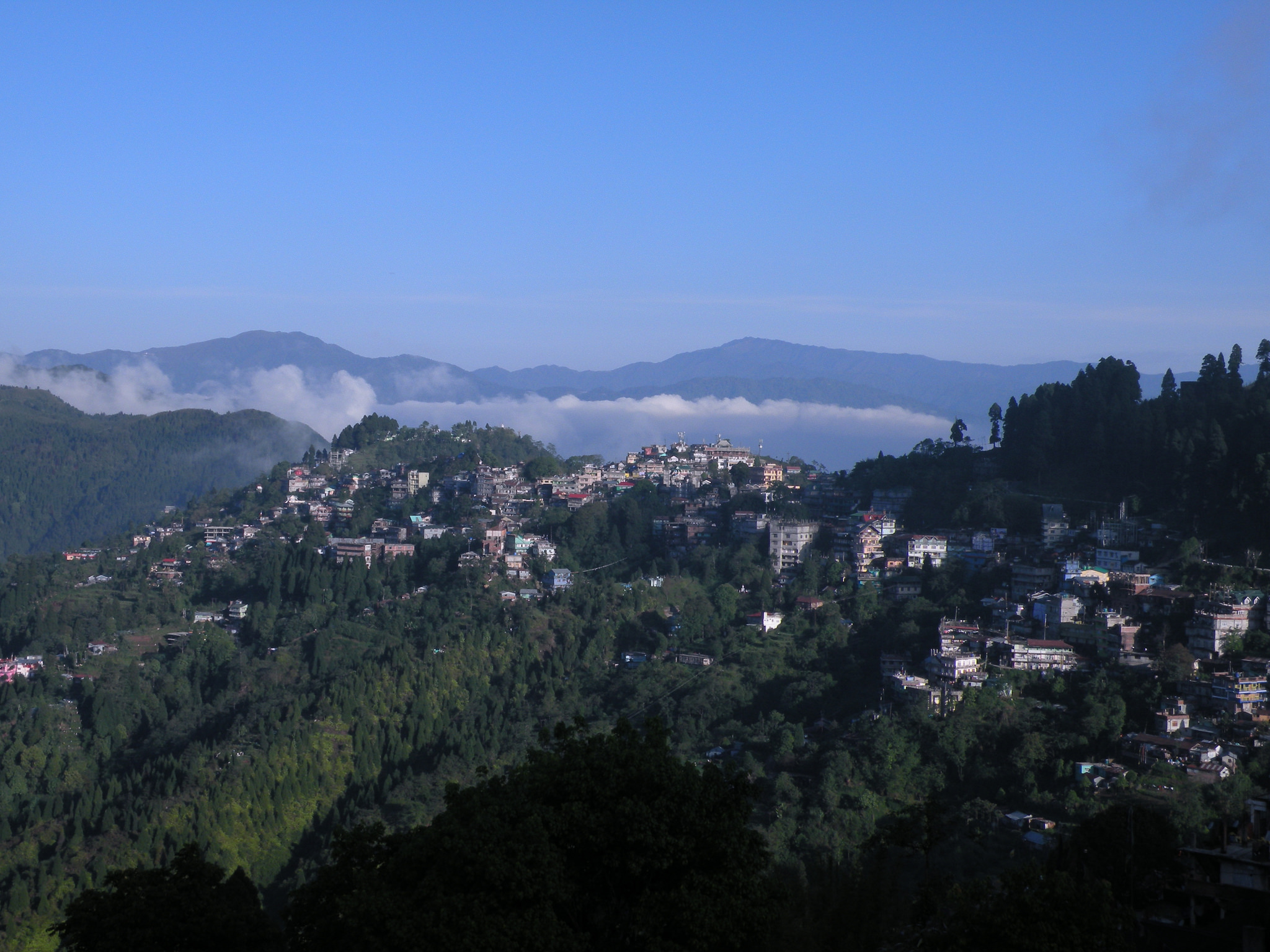
.jpg)
